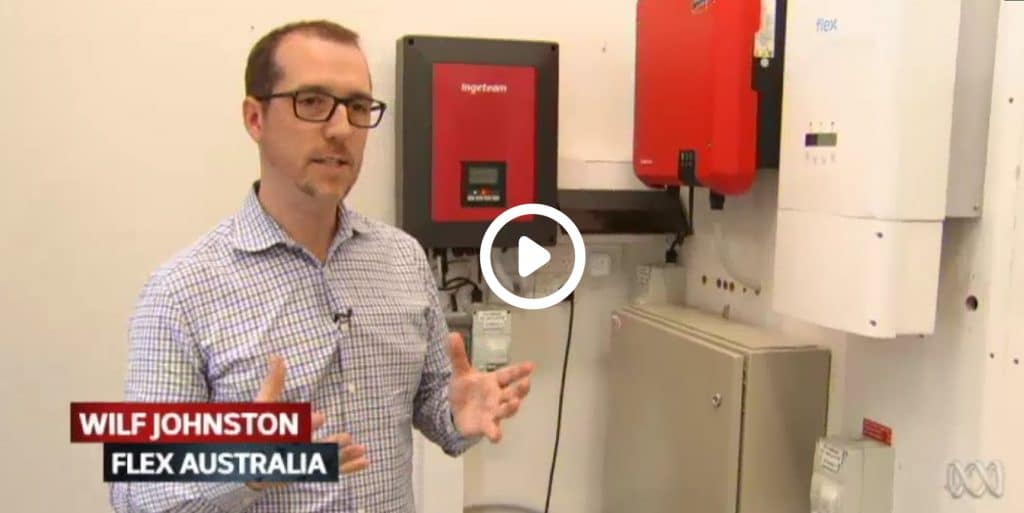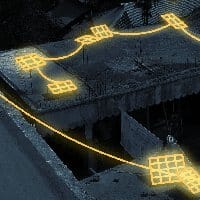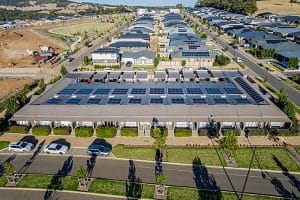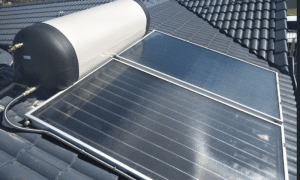Australians are benefiting from peer-to-peer solar trading by selling directly to their neighbours. Buyers, sellers, and investors can all take part. Households using solar panels can make a profit for using extra power from their roof and putting it back on the grid. Companies then sell it on a higher price, so everyone is happy.
Many Australian start-ups are experimenting with ways to give back control to customers facing constant price increases. Other new technologies such as apps are helping too. So, who’s doing what and how can you benefit from the latest energy efficiency technology?
Environmental scientist Paul Donovan, interviewed by ABC news, thinks this is the way forward. Discussing the idea in which peer-to-peer (or P2P) energy trading helps the consumer trade without a power company, he said, “This is in response to a decentralisation of energy trading. It’s becoming increasingly untenable to have a centralised system which is incredibly expensive because of infrastructure.”
Going off the grid
Donovan also highlighted how people are going off-grid. They demand less electricity for their renewable energy solutions, thanks to solar panels and batteries.

Start-up Power Ledger creates software to let those in apartment groups or commercial properties sell extra energy to their neighbours. The Perth company uses Blockchain to directly sell energy to those nearby.
Blockchain is like Bitcoin – it changes commodities and currencies into digital form. As the exchange is digital, there is no need for a middleman such as a bank. Other cryptocurrencies such as Ripple and Ethereum use Australian dollars. According to Steve Sammartino, technology author, the ten largest cryptocurrencies are worth more than $95 billion.
How do I get involved in peer-to-peer solar electricity trading?
To trade electricity using Blockchain, fit communication hardware to your standard digital electricity meter. This will help keep track of electricity being generated, imported or exported. This then changes into Blockchain tokens for
accounts in the network – producers, prosumers, and consumers. Trading takes place between all these parties. Next, exchange Blockchain into Australian dollars.
A peer-to-peer solar project
Local Generation Network Credit encourages energy savings. The idea, also known at LGNC, gives consumers a credit for taking power off the network during peak periods.
Demand response is another idea gaining popularity across Australia. Demand response is a way of dealing with peak energy demand. It uses financial incentives with metering technology to reduce energy during peak times. According to a recent article in Arenawire, 64 per cent of Australians supported this plan. However, only 28 per cent were in favour of building new power stations and infrastructure.
New kids on the peer-to-peer solar block
Many see breaking down traditional power networks as a major way forward. Power Ledger raised $35.15 million in six weeks during Australia’s first Initial Coin Offering.
Leigh Travers, DigitalX CEO, talked to ABC news about the strong support for the business model: “It really is a project that uses Blockchain technology to disrupt an industry and enable a peer-to-peer economy to flourish.”
Currencies such as bitcoin don’t convince everyone. At a New York investor conference in 2016, J.P. Morgan CEO Jamie Dimon, quoted in the Guardian, warned that the digital exchange method could ‘blow up’ like previous market bubbles.
But Travers is more confident. “If you’d invested $2,000 in Ethereum when it did their ICO, it would be worth over a million dollars now. So, there has been a lot of success from early stage investors.”
Flex and GreenSync’s revolutionary apps
Another innovation getting attention are apps that controls and trades home energy. Flex’s PowerPlay and GreenSync’s deX are leaders in the field.

In a recent interview on ABC’s Lateline, Flex MD Wilf Johnston showed how deX will coordinate all the renewable energy assets in your house. Storage or solar usage is optimised for the grid. The new device will coordinate energy so you can manage your energy use potential at all time. The idea is to create a marketplace so even the smallest operators make money in energy trading.
These “behind the meter” appliances are in your home or business. With one-fifth of Australian homes fitted with solar panels and battery use rocketing, there is massive potential. Ivor Frischknecht, CEO of the Australian Renewable Energy Agency (ARENA), predicts these initiatives will increase and could reach 50 per cent in the long term. Importantly, this will mean more scope to see that all the individual pieces work as a whole.
At the recent All Energy conference: Making the Smart Grid a Success, Flex MD Wilf Johnston spoke about how renewable energy is rapidly becoming decentralised. It allows people to generate it themselves and use it behind the meter. Companies need to get to know how energy is used in the home so they can meet their customer’s energy requirements accurately and efficiently. The next step in the evolution of the energy supply system is going beyond the meter and into the home, he continued.
With this knowledge, a smart energy system can adapt itself to its users and deliver clean and cost-effective electricity. It seems it’s only a matter of time before digital technologies maximise energy cost savings for more and more households across Australia.
See Energy Matters’ guide to peer to peer solar energy trading.







































